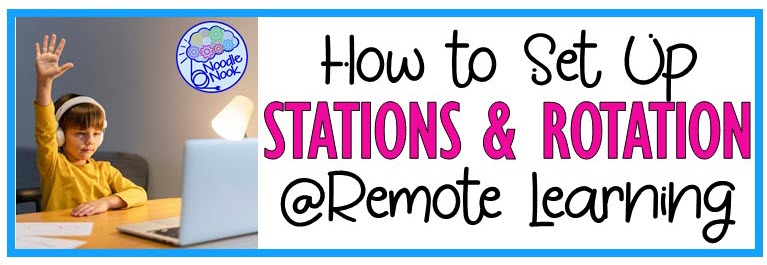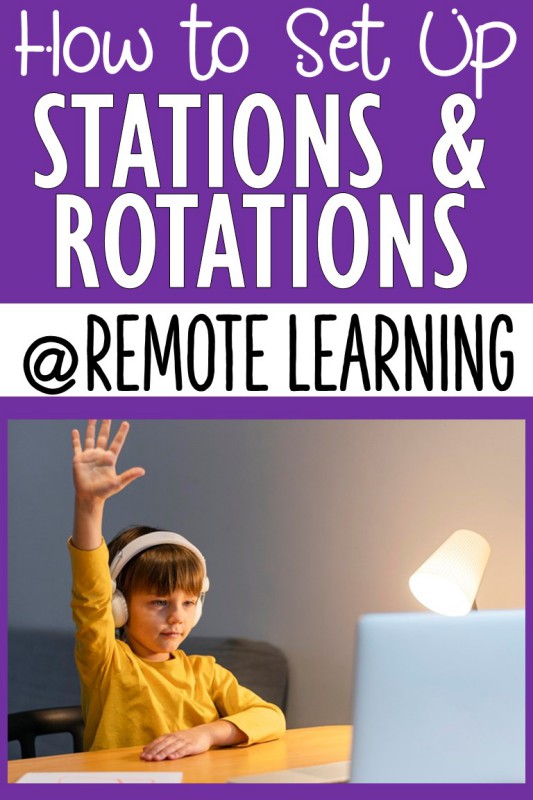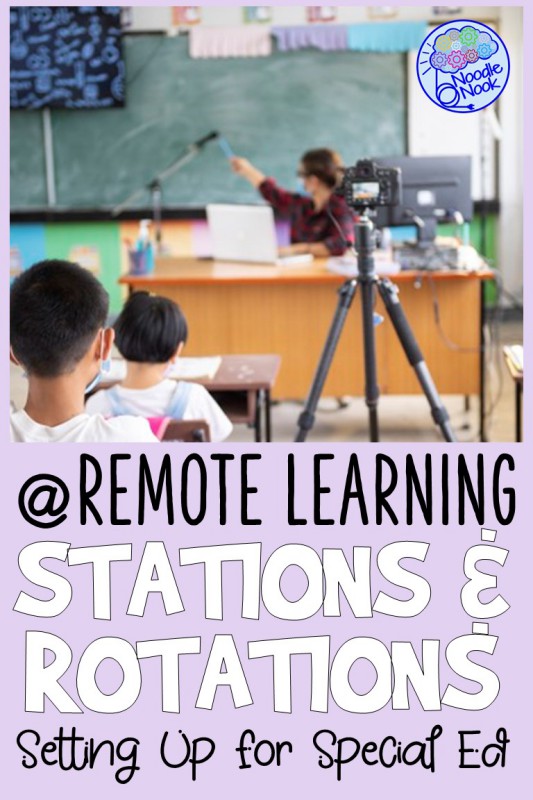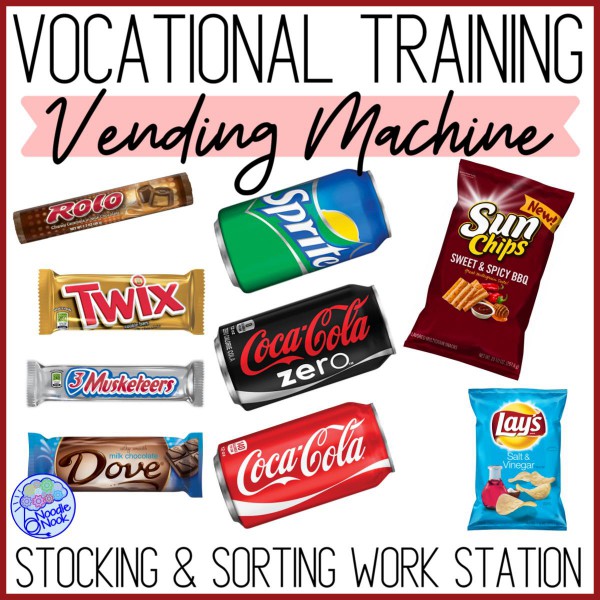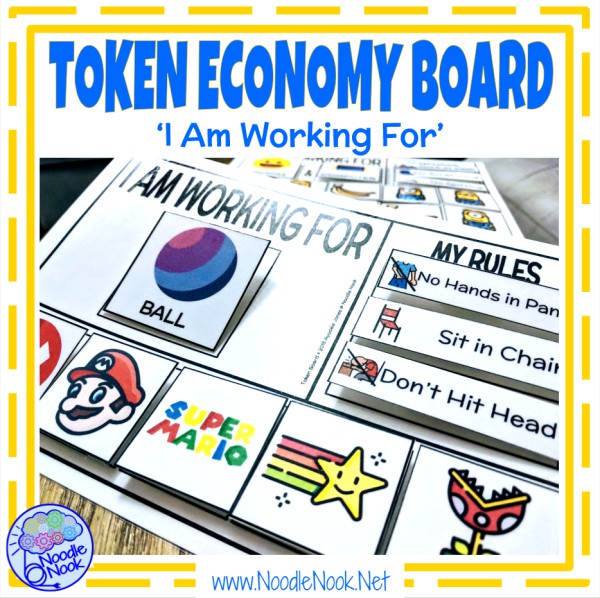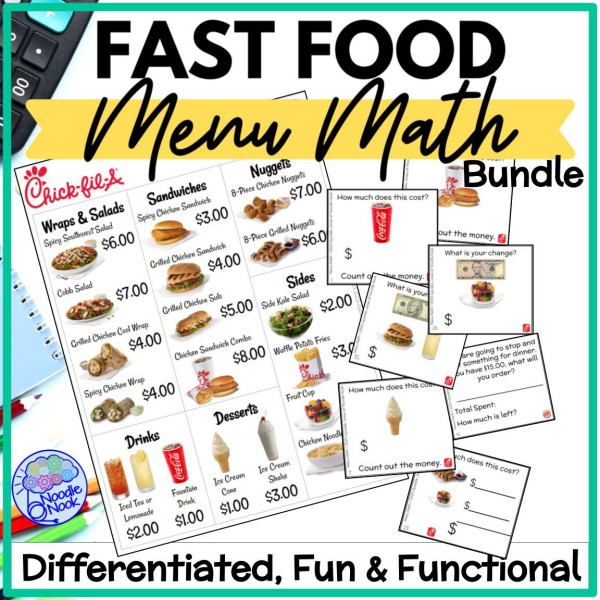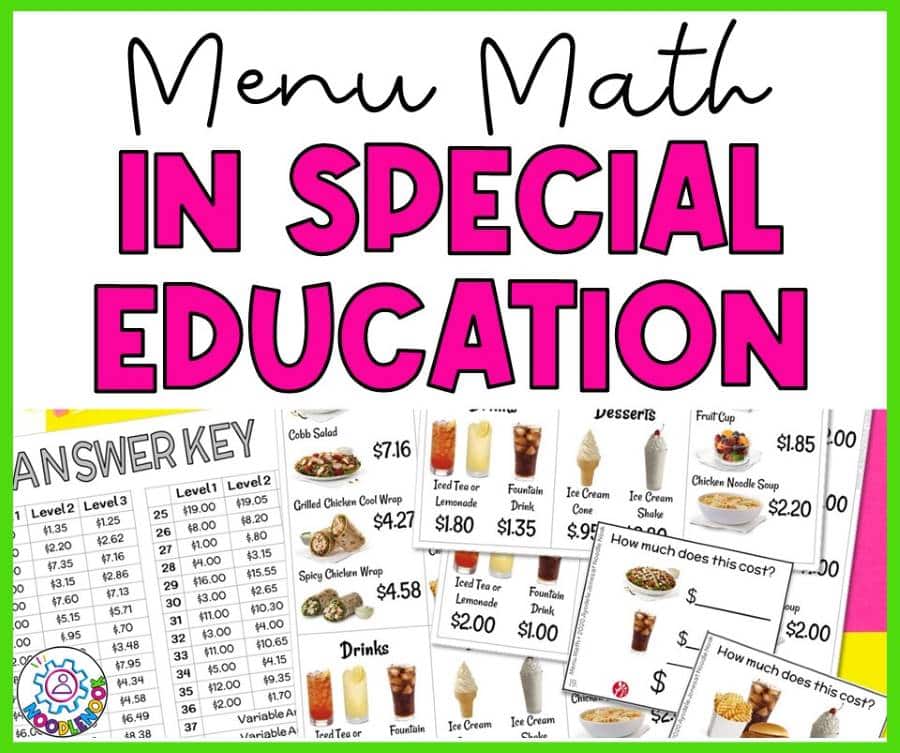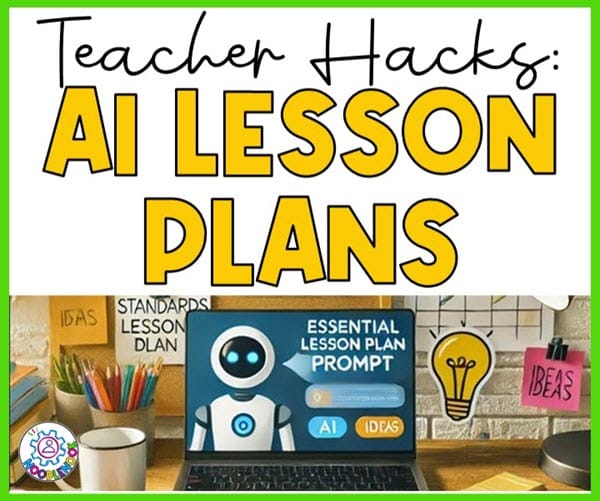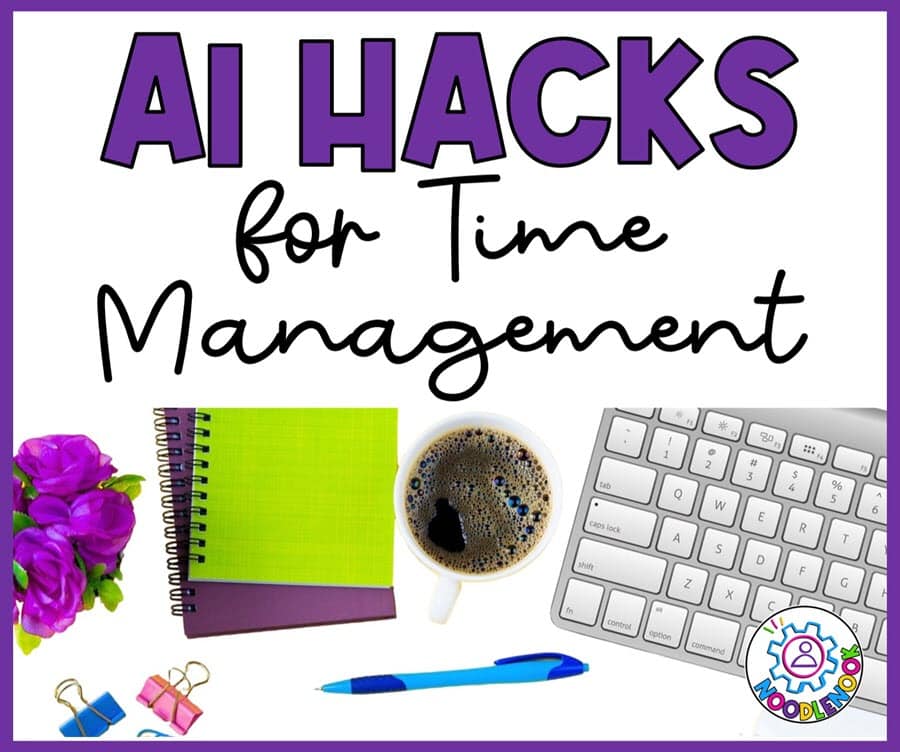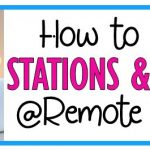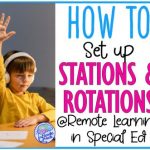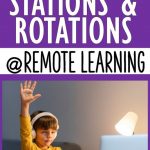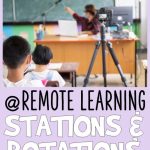If you are wracking your brain to come up with effective ways to do remote learning in special ed classes, I have the answer. Two Words: Stations and Rotations. Can it work? Is it really that simple? The answer is YES!
All you need are some simple strategies to make it actually work. Talking about how to make station rotations work for you sounds like a unicorn and a Pegasus walked into a bar kind of story. Pure fantasy and somewhat comical.
But really, it can work for you.
First off, if you haven’t read my post on stations and rotations in special ed, then check out that post when you’re all done. I’ll put a link at the end of this post so you can read that one next.
Second, think about what your students need most in your class. Where are you struggling? What would be the difference between you making everything work and finding another job? Well, with those questions in mind, let’s talk…
Stations during Remote Learning in Special Ed
When it comes down to it, special ed students learn better in smaller settings. They also learn best with great face-to-face instruction. Since that’s not always possible (like when there is a global pandemic), then we sped teachers have to get creative.
The problem is that despite learning remotely, our student’s needs haven’t changed. They still need smaller groups with focused attention. Enter stations stage left!
If you haven’t seen the graphic from my post on Stations and Rotations in Special Ed, then now’s a great time to pop over and take a look.
When you think about the way some teachers have opted to do remote learning, then you know they’ve popped open a browser window with their remote kids on Zoom and tried to carry on as usual in the classroom. They’ll pop over to the live stream ever so often and check how things are going. And they are rarely, if ever, going well.
I think we can all agree, this is the worst possible setup.
Now let’s imagine something different (and better). Imagine three stations where students are lead by a teacher or para. Each of the three stations has a different activity offering the students a lot of variety and change. Each activity is differentiated and works live or virtually, making each station really purposeful and meaningful. Doesn’t that sound better?
How to Set Up Stations during Remote Learning
Okay, I have painted a pretty picture… but let’s get down to brass tacks. You need three things to make stations and rotations work during remote learning in special ed.
1. You need at least two adults in the classroom. Three is better, but two will do. With at least two people you can set up three rotations. That is the goal here, three rotations.
2. You need 3 different activities. Two should be adult led or facilitated and the last one should be as independent as possible.
3. You need each activity to be differentiated. They should be adapted to the student’s needs and the platform. That means a cut-and-paste activity is great for in-person kids, but what about online? Do you have a way for them to interact?
That’s all. That’s all you need. Simple? Obviously not. Read on…
Staffing Stations during Remote Learning
As I mentioned, you’ll want at least two adults to man the stations. Three is better. Each of these 2-3 adults will have an activity they will teach three times during a single class period. If the majority of your students are in person, then you’ll likely have two in-person rotations and one remote rotation. If most of your kids are remote, then plan on 2 remote rotations and one in-person.
The students can rotate to each station by physically moving. If you are in the post-pandemic classroom, however, it is likely better to have the teachers move to each of the three stations and have the students stay put. As the teacher moves, they will take all the materials they need to succeed with them. They will rotate every 10-20 minutes, depending on how long your class periods or blocks are.
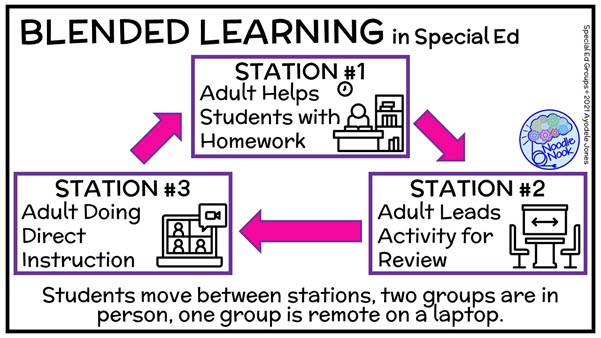
3 Different Activities?!?!
Yeah, I said it. Three different activities. I know that can seem like a lot, but it isn’t as bad as you think. If you would normally do a little large group instruction, then have students practice with a worksheet and possibly start their homework, then there you have it! Three rotations! 1: Direct Instruction with the Teacher. 2: Practice Activity with a Para. 3: Homework in an Independent Station.
Some teachers worry that having student work on homework or the activity before they’ve had direct instruction is flawed. I agree. Try having students do the 2 & 3 activities the day after they’ve had the direct instruction. It’s a great way to see how much retention there is. You can also use the 2 & 3 stations to pre-teach materials before the direct instruction lessons. Try a couple of different setups here to see what works best for your students.
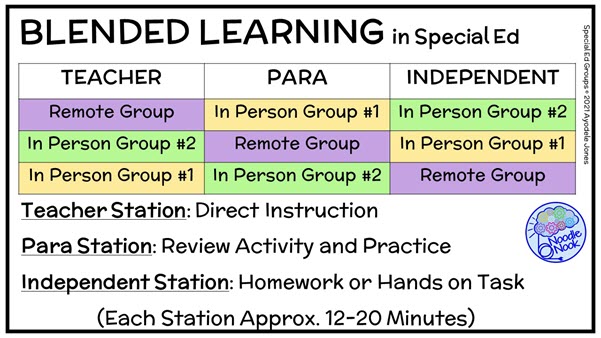
Differentiated. Bingo!
Does it feel like you’re playing a game of SpEd bingo and differentiated is on every card? 😆 Okay, but seriously. Differentiation is a real and proven strategy when working with students. You have to have a way to make things a little harder, and little easier, and remote-friendly.
Parents are also working hard at home to help their kids… and that is a challenge in and of itself. You can’t send home a million papers a week to have parents print, cut and prep. That’s part of why I love the new digital interactives that are being made during remote learning. I love how it saves on resources by limiting the paper, lamination and Velcro. Hold up, I know what you’re thinking. We need that stuff, it’s true. But we also need a way to have access without a home printing press.
When it comes to differentiation, check out this post on how to differentiate activities for students in SpEd. Once you’ve figured out how to adapt things better for your students, you still have to make sure the tasks are suitable for online learning. Consider tools like TpT’s Digital Interactives (including this great Black History Unit), Google Slides or Docs, and the learning platform your district is mandating… there may be some things you can still make work for your students. The ultimate goal is NOT to have a student online learning by sitting passively trying not to fall asleep.
Distance Learning in Special Ed
When it comes to remote learning in special ed, I feel compelled to say these final words.
You are going to have to give this a try and know one thing. This will fail the first time you try it. Don’t give up. You were not the awesome teacher you are now on your first day.
There will be some trial and error here… just remember to stay strong and teach on!
Oh, and if you haven’t read my post on stations and rotations in special ed, then check it out now. It will totally help you with remote learning in special ed or in general ed where sped students are included.
Teaching is tough.. But so are you. Remember to stay strong and teach on!
P.S. If you are looking for a great activity to use when doing rotations in a special ed classroom, check out this adapted Women in History month-long unit. It already comes with lesson plans that include 3 rotations every day and they last the whole week. See how you can set up this resource and my adapted Black History month-long unit in this post.

